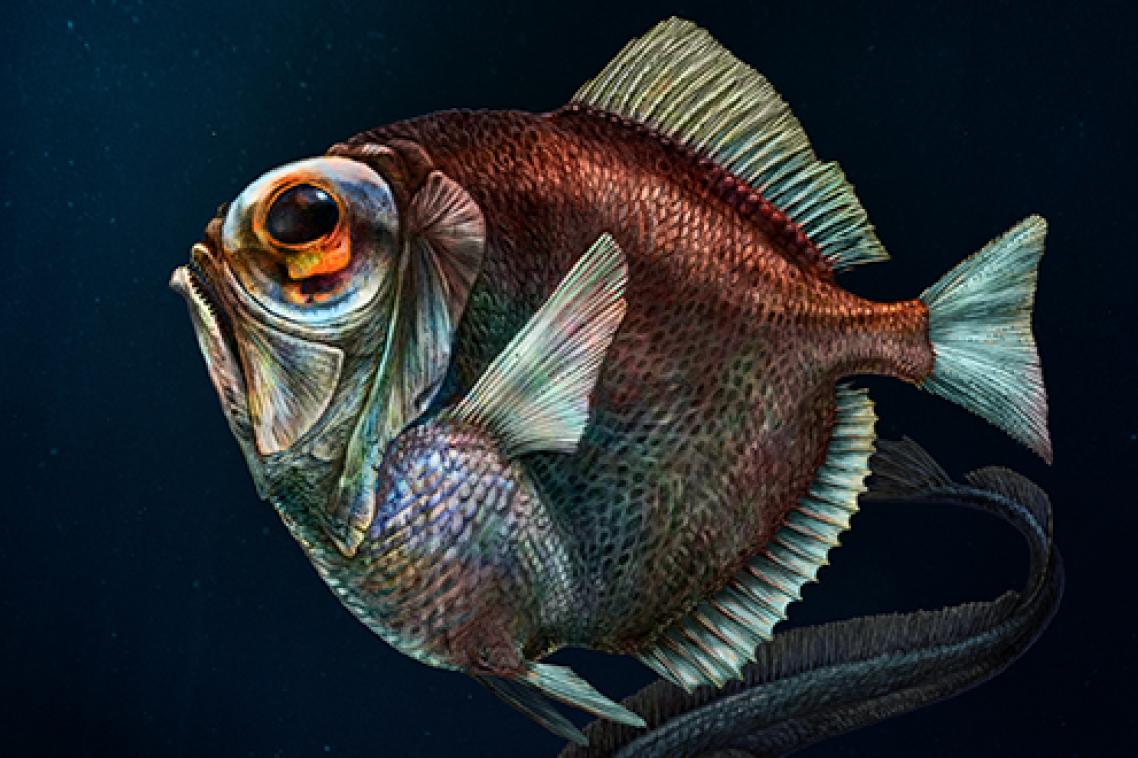Remarkable fish see colour in deep, dark water

Fish living up to 1500 metres below the surface have developed surprisingly diverse vision that could help them determine predator from prey in the dimly-lit depths of their fish-eats-fish world.
An international research team involving University of Queensland scientists believes the deep-sea discovery that fish could see colour in the dark shines new light on the evolution of vision in vertebrates, including humans.
UQ Queensland Brain Institute scientist Dr Fabio Cortesi said vertebrates used two types of photoreceptor cells — rods and cones — in order to see.
“Cones are used in bright-light conditions, while rods are generally used in dim-light.”
Both rods and cones contain light-sensitive proteins called opsins that absorb light at specific wavelengths.
"Colour vision in vertebrates is due to the fact that cones use around four different opsins," Dr Cortesi said.
“This variety allows sensitivity to a broad range of colours.
“Ninety-nine per cent of all vertebrates have just one opsin protein in their rods, so most are colour-blind in dim-light conditions because they rely only on that single rod opsin.”
Deep sea fish that live at 200 to 1500 meters below the surface tend to be no exception.
UQ deep-sea visual ecology specialist Dr Fanny de Busserolles said water at that depth filtered most light out.
“Down there it’s very monochromatic, and most fish just perceive blue light,” she said.
“But we have discovered some spectacular exceptions.”
Dr Cortesi said researchers examined the genomes of 101 species of fish.
“We found 13 species had more than one rod opsin gene, and one – the silver spinyfin fish – had a remarkable 38 of these opsins."
He said gene sequence analysis and experiments on how those rod opsins function suggested silver spinyfins were able to pick up a wide range of wavelengths of light, meaning they probably saw many colours.
Dr Cortesi said this ability could have evolved as a survival weapon.
“There are many colours of bioluminescence – light produced and emitted by living organisms – down there, and it mainly appears in flashes coming from other fish," he said.
“If you want to survive down there you need to quickly decide if you are seeing a potential predator or potential prey.”
The large international research team involved in the study included QBI’s Professor Justin Marshall, Assistant Professor Zuzana Musilova at Charles University in the Czech Republic and Professor Walter Salzburger at Switzerland’s University of Basel.
The study is published in the journal Science.
Media: Dr Fabio Cortesi, f.cortesi@uq.edu.au, +61 (0) 415 058 022.
Related articles

Low-cost tool could one day detect leukemia in a patient’s saliva

UQ hosts global summit: harnessing the power of sport for innovation
Media contact
UQ Communications
communications@uq.edu.au
+61 429 056 139
